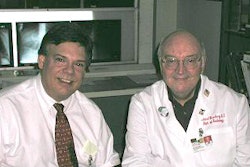In 2003 the Accreditation Council for Graduate Medical Education (ACGME) limited residents to an 80-hour work week to address multiple issues, including the reduction of medical errors. While an increase in patient safety is a noble goal, reforming residency programs is not without its costs. What degree of decline in adverse events would be necessary to make reform less of a financial burden on hospitals and society?
Researchers from California sought to answer that question by performing a cost analysis using four possible reform strategies. They analyzed data from 2001, culling figures from previously published literature. Their results are in the October Journal of General Internal Medicine.
Dr. Teryl Nuckols and Dr. José Escarce, Ph.D., worked on the assumption that when net costs are zero, reform is cost neutral. Nuckols is from the division of general internal medicine and health service research at the University of California, Los Angeles. Escarce is from the Rand Corporation in Santa Monica, CA.
The four reform strategies for limiting resident work hours to 80 per week involved transferring excess work to one of the following: attending physicians, midlevel providers (physician assistants), task-tailored substitutes, or existing residents.
"We estimated that 294,320 preventable adverse events occurred at teaching hospitals in 2001, and that 20,308 were fatal," they wrote. "Nationally, these events cost teaching hospitals $3.6 billion and society $13.2 billion" (JGIM, October 2005, Vol. 20:10, pp. 873-878).
According to their results, accomplishing nationwide ACGME reform by handing over responsibilities to attending physicians would cost institutions $2.2 billion. Letting midlevel providers take on extra workload would cost $1.1 billion. The expenditure for task-tailored substitutes would be $673 million.
The researchers added that for reform to be cost-neutral, adverse events must be decreased by 61.9% using attending physicians, 30.9% using midlevel providers, and 18.5% using task-tailored substitutes. Finally, they found that a 10% decrease in adverse events would avert a little more than 2,000 deaths.
"To summarize our findings, the ACGME residency work-hours reform could cost $673 million to $1.1 billion per year nationwide if excess resident work is transferred to nonphysician providers," Nuckols and Escarce explained. "Preventable adverse events appear far more expensive, costing teaching hospitals $3.6 billion and society $13.2 billion per year -- and claiming over 20,000 lives."
Still, it would take an 18.5% to 30.9% drop in adverse events to make reform cost-neutral for teaching hospitals. Achieving these results would require additional funds from sources such as the U.S. government, the authors stated.
In other imaging residency news, a number of presentations at the 2005 RSNA in Chicago offer insights on the current state of training programs. One scientific paper (SSC22-07) compares the accuracy of preliminary reports in the emergency department between radiology residents and subspecialty radiologists. On a similar note, another paper (SSC23-04) examines how initial reports by residents and final reports by attendings impact patient outcomes. Finally, a third paper (SSC23-06) investigates why female medical students are disinclined to seek careers in imaging.
By Shalmali Pal
AuntMinnie.com staff writer
October 27, 2005
Related Reading
Internal audits, nighthawk attendings enrich residency experience, July 20, 2005
Malpractice attorney urges better communication, more physician involvement in cases, July 15, 2005
Self-referral puts serious crimp in rad residents' educational experience, June 7, 2005
Study asks: If residents snooze more, do patients lose out more? December 21, 2004
Copyright © 2005 AuntMinnie.com


















